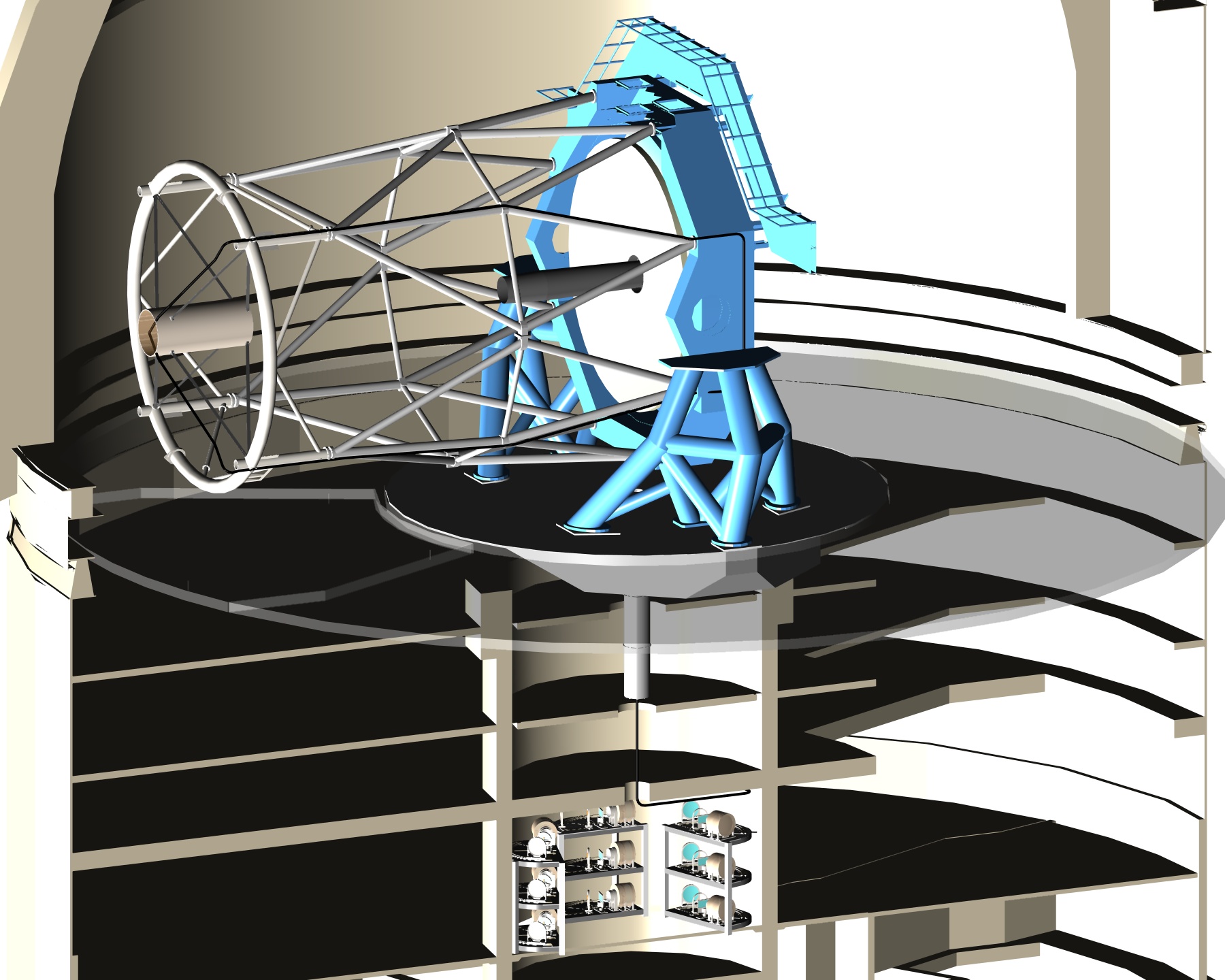Kilo-Aperture Optical Spectrograph
K.A.O.S. is a highly multiplexed prime focus wide-field multi-object fiber spectrograph concept for one of the state-of-the-art telescopes of the Gemini Observatory. K.A.O.S. is conceived as a facility instrument that will enable the next generation of spectroscopic surveys.
NEW!!! The KAOS Purple Book describes the main scientific drivers for K.A.O.S. and its technical feasibility.
Main Science Drivers (Killer Applications and Other Science!)
I. Dark Energy
KAOS can measure the equation of state of the dark energy by measuring the physical length scale of the acoustic oscillations in the galaxy power spectrum at high redshift (z~1 and z~3) and comparing this to the scale at the surface of last scattering (determined by WMAP and Planck). This is a direct metric measure which is largely independent of the sociological habits of galaxies, and provides a constraint on w(z) independent from that provided by supernovae or lensing.
II. Galaxy Genesis
KAOS can determine the primary physical mechanisms responsible for the formation of the thick disk and halo of the Milky Way and M31 by obtaining accurate kinematics and chemical abundances of a million stars.
III. Other Science
Galaxy evolution (0.3 < z < 6.0); large scale structure of galaxies and the IGM; QSO surveys; rare object searches; IMFs in galactic star clusters; dynamics, chemistry and star formation histories of local group galaxies; intracluster stars in Virgo; turbulence in the ISM; mapping the reionization epoch; etc., etc.
KAOS is conceived as a facility instrument: you can use it too!
Basic KAOS Specs
| Field of view | 1.5 degree diameter |
| Number of fibers | 4,000-5,000 |
| Resolution | 1,000-40,000 |
Why Do We Need KAOS?
KAOS is in a class of its own: it will yield a nearly two order of magnitude gain in information gathering power over that provided by extant or planned facilities and will therefore uniquely position the Gemini community to construct the large spectroscopic samples required to address many key questions in astronomy at the start of the next decade. We can measure the gains resulting from KAOS in two ways: (1) the multiplex advantage resulting from the large number of fibers; and (2) the A-Omega advantage.
KAOS on one of the Gemini Telescopes

The KAOS Purple Book
The Purple Book describes the main scientific drivers for K.A.O.S. and its technical feasibility.
The KAOS Science Team
Sam Barden (NOAO), Chris Blake (UNSW), Joss-Bland Hawthorn (AAO), Brian Boyle (AAO), Michael Brown (NOAO), Matthew Colless (MSO/ANU), Warrick Couch (UNSW), Len Cowie (IfA/UH), Arjun Dey (NOAO), Daniel Eisenstein (Univ. of Arizona), Ken Freeman (MSO/ANU), Karl Glazebrook (Johns Hopkins Univ.), Buell Jannuzi (NOAO), Francis Keenan (Queens University, Belfast), Rolf Kudritzki (IfA/UH), Eric Linder (Lawrence Berkeley Laboratory), Anna Moore (AAO), David Meyer (Northwestern Univ.), Jeremy Mould (NOAO), Joan Najita (NOAO), Robert Nichol (Carnegie Mellon Univ.), Knut Olsen (NOAO), John Peacock (ROE), Hee-Jong Seo (Univ. of Arizona), Thaisa Storchi-Bergmann (UFRGS, Brasil), Steve Strom (NOAO), Nick Suntzeff (NOAO), Alex Szalay (Johns Hopkins Univ.), Rosie Wyse (Johns Hopkins Univ.)
Updated on July 12, 2022, 7:50 am